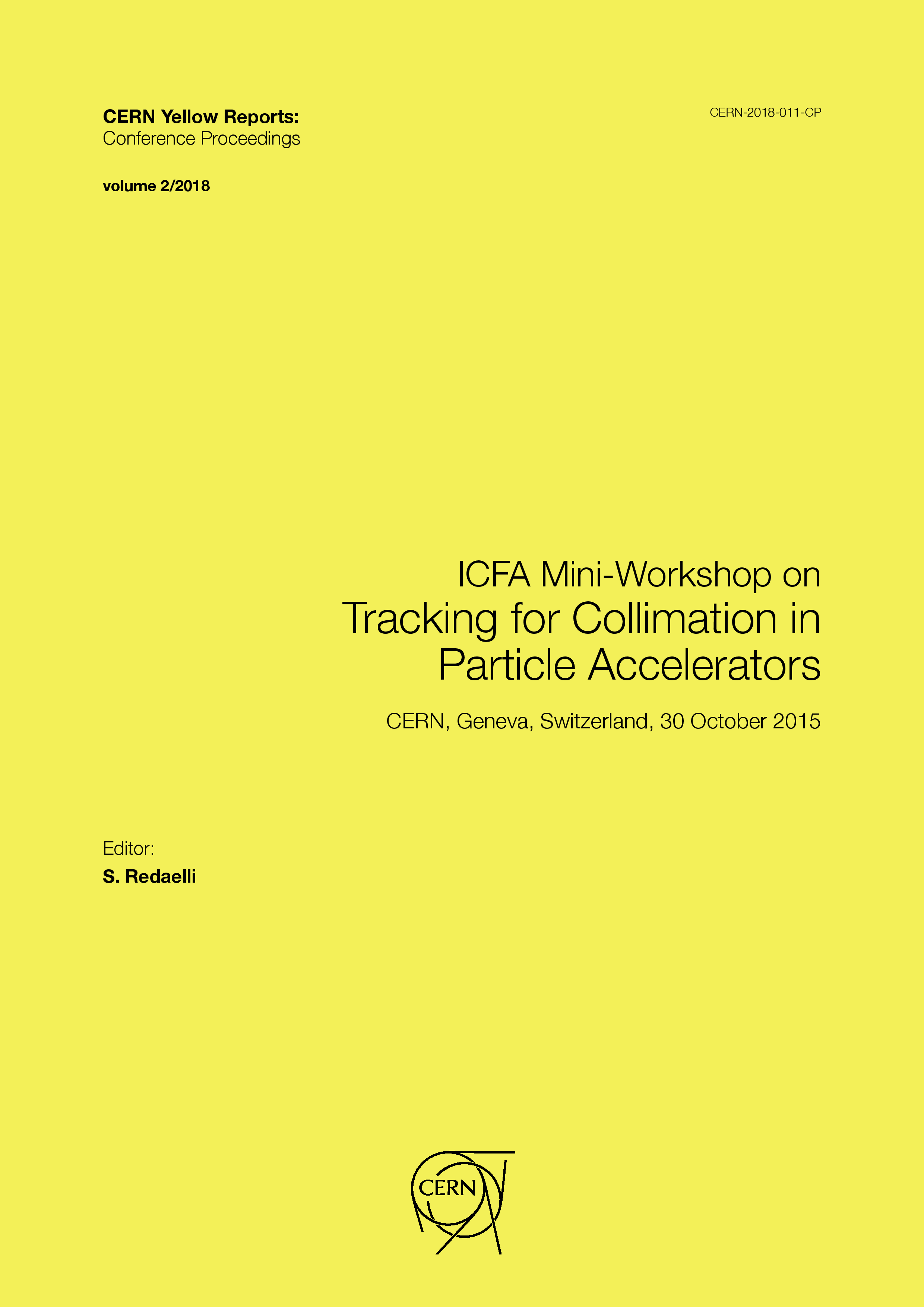Updated implementation of collimator materials in SixTrack and MERLIN codes
DOI:
https://doi.org/10.23732/CYRCP-2018-002.109Abstract
The High-Luminosity upgrade of the Large Hadron Collider will push various operational parameters of the machine beyond the design values. The LHC beam collimation system turns out to be one of the bottlenecks for the achievement of the future challenging beam parameters. In particular, various limitations have been identified that call for an improvement of the materials used in various collimator types.
An R&D program at CERN explores novel composite materials for collimators with improved mechanical robustness and reduced electromagnetic impedance that can address the main limitations of the present system.
A new collimator material implementation introduced in SixTrack and MERLIN, simulation codes for beam collimation at the LHC, allows to simulate advanced collimators based on novel composite materials. An immediate application of this novelty in the two codes is to study the effect of the upgrades collimators on the cleaning performance of the collimation system. After presenting the methods used to model composite materials in each code, we apply it to the case of cleaning simulations with novel collimator materials in the LHC, where the results obtained with SixTrack and MERLIN are compared.
Downloads
Published
Issue
Section
License
Copyright (c) 2018 CERN

This work is licensed under a Creative Commons Attribution 4.0 International License.
Authors who publish with this publication agree to the following terms:
- CERN retains copyright and publishes the work licensed under the Creative Commons Attribution License 4.0 that allows others to share the work with an acknowledgement of the work's authorship and initial publication in this series.
- Authors are able to enter into separate, additional contractual arrangements for distribution of the published version of the work (e.g., post it to an institutional repository or publish it in a book), with an acknowledgement of its initial publication in this series.
- Authors are permitted and encouraged to post their work online (e.g., in institutional repositories or on their website) prior to and during the submission process, as it can lead to productive exchanges, as well as earlier and greater citation of published work (See The Effect of Open Access).

